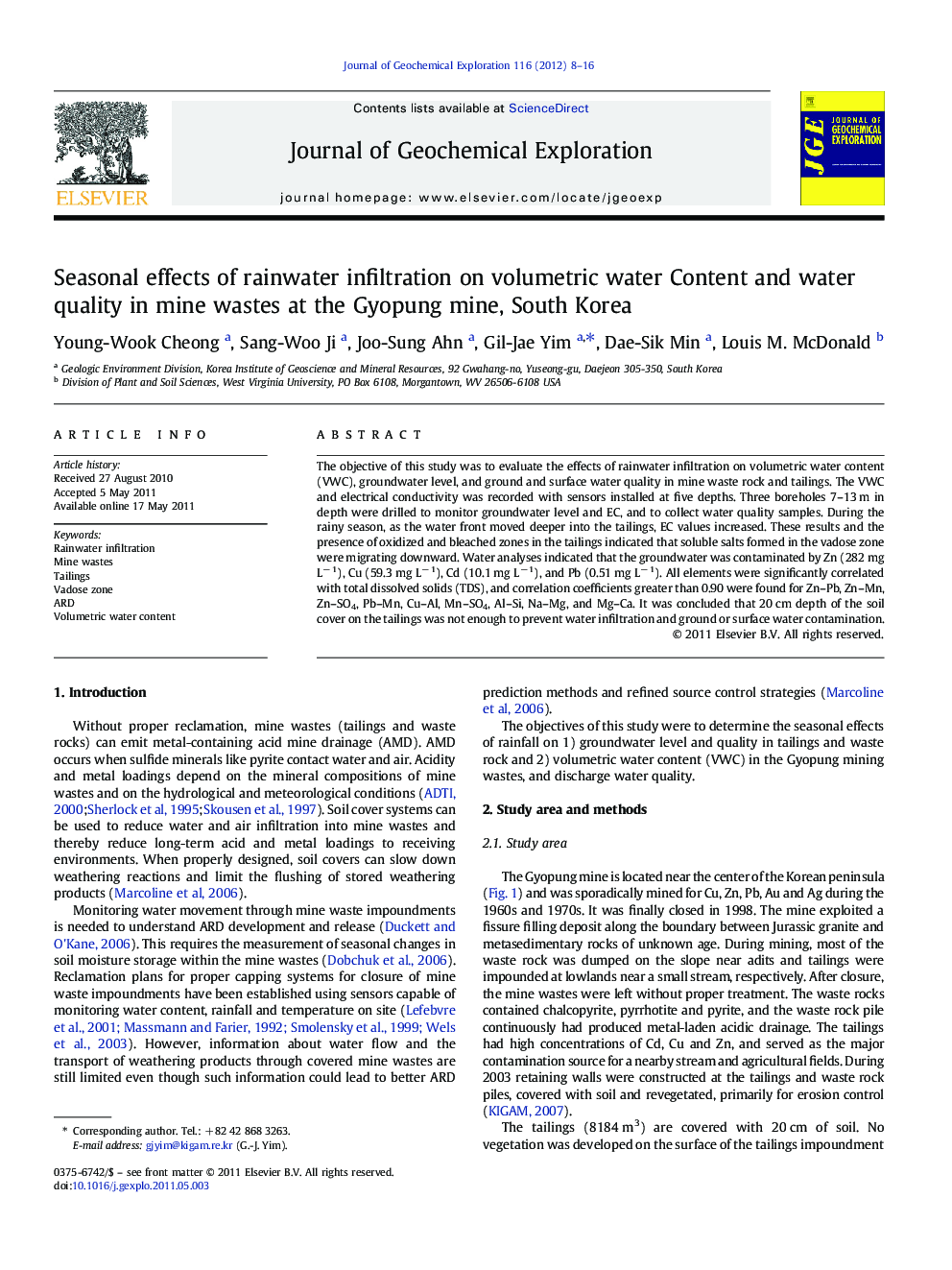| کد مقاله | کد نشریه | سال انتشار | مقاله انگلیسی | نسخه تمام متن |
|---|---|---|---|---|
| 4457718 | 1620938 | 2012 | 9 صفحه PDF | دانلود رایگان |

The objective of this study was to evaluate the effects of rainwater infiltration on volumetric water content (VWC), groundwater level, and ground and surface water quality in mine waste rock and tailings. The VWC and electrical conductivity was recorded with sensors installed at five depths. Three boreholes 7–13 m in depth were drilled to monitor groundwater level and EC, and to collect water quality samples. During the rainy season, as the water front moved deeper into the tailings, EC values increased. These results and the presence of oxidized and bleached zones in the tailings indicated that soluble salts formed in the vadose zone were migrating downward. Water analyses indicated that the groundwater was contaminated by Zn (282 mg L− 1), Cu (59.3 mg L− 1), Cd (10.1 mg L− 1), and Pb (0.51 mg L− 1). All elements were significantly correlated with total dissolved solids (TDS), and correlation coefficients greater than 0.90 were found for Zn–Pb, Zn–Mn, Zn–SO4, Pb–Mn, Cu–Al, Mn–SO4, Al–Si, Na–Mg, and Mg–Ca. It was concluded that 20 cm depth of the soil cover on the tailings was not enough to prevent water infiltration and ground or surface water contamination.
Research highlights
► Volumetric water content was useful for monitoring the migration of salt in tailings.
► Soluble salts played a key role in deteriorating groundwater quality.
► Peak metal loads at the study area occurred during the rainy season.
Journal: Journal of Geochemical Exploration - Volumes 116–117, May–June 2012, Pages 8–16